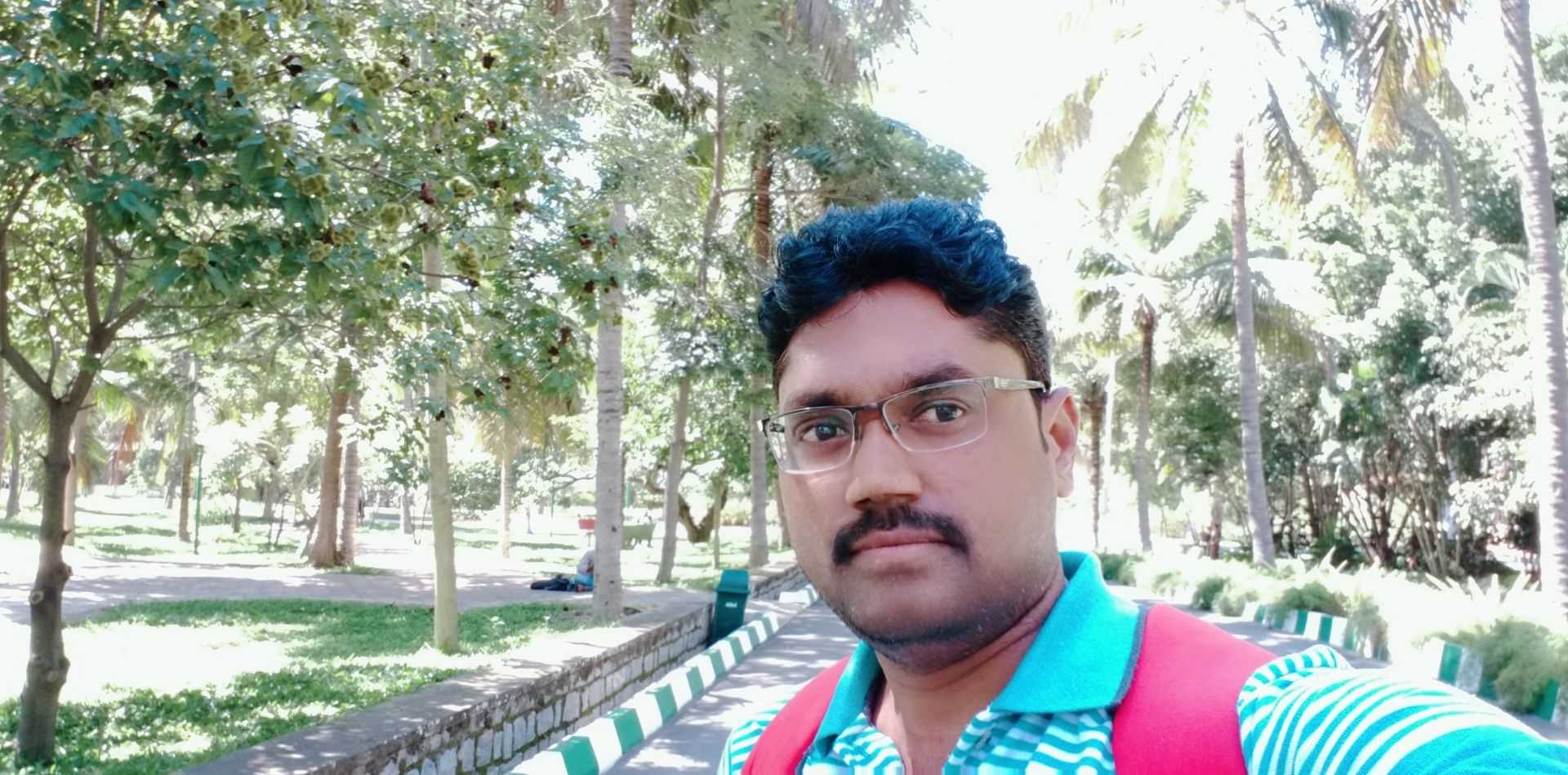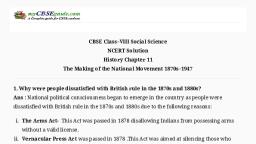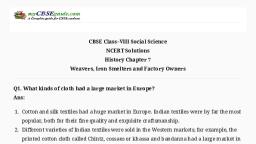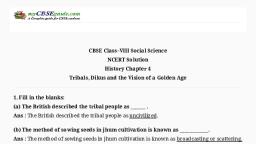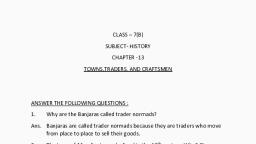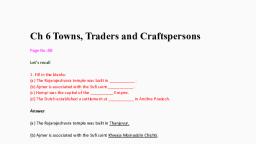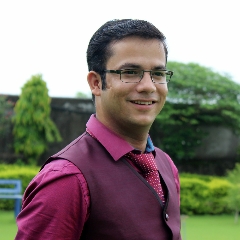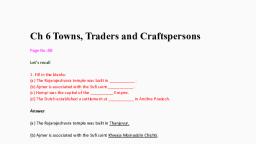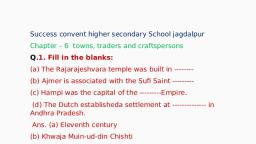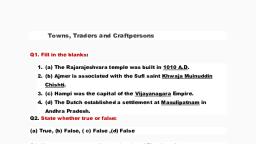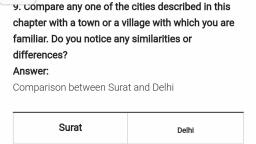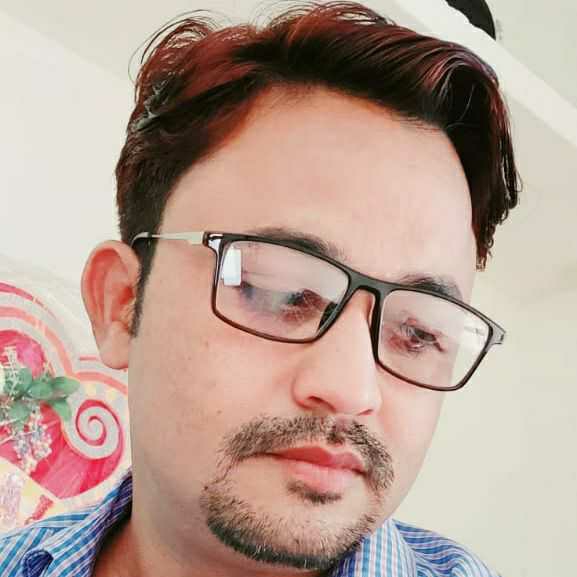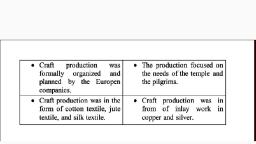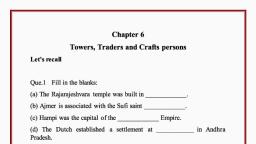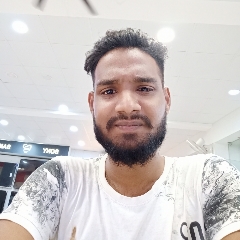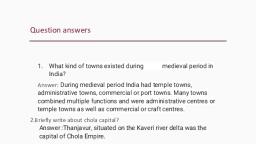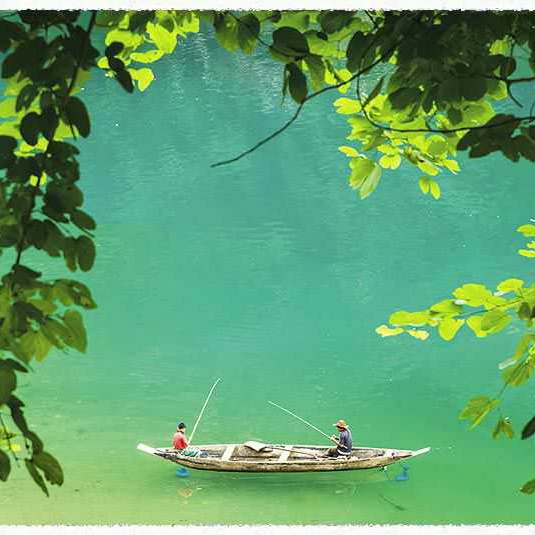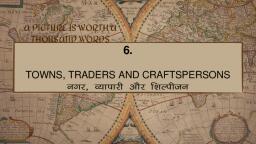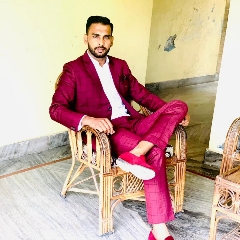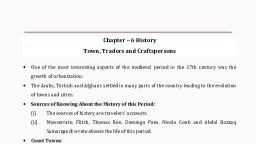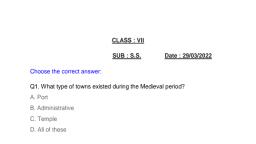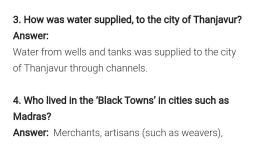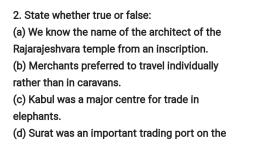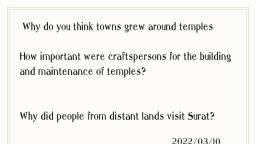Page 1 :
CBSE Class–VII Social Science, NCERT Solutions, History Chapter 6, Towns, Traders and Craftspersons, , Q1: Fill in the blanks:, a. The Rajarajeshvara temple was built in ____________., b. Ajmer is associated with the Sufi saint ____________., c. Hampi was the capital of the ____________ Empire., d. The Dutch established a settlement at ___________ in Andhra Pradesh., Ans: (a) The Rajarajeshvara temple was built in_1010 A.D._., (b) Ajmer is associated with the Sufi saint _Khwaja Muinuddin Chishti__., (c) Hampi was the capital of the __Vijayanagara__ Empire., (d) The Dutch established a settlement at __Masulipatnam__ in Andhra Pradesh., , Q2: State whether true or false:, (a) We know the name of the architect of the Rajarajeshvara temple from an, inscription., (b) Merchants preferred to travel individually rather than in caravans., (c) Kabul was a major centre for trade in elephants., (d) Surat was an important trading port on the Bay of Bengal., Ans: (a) True, (b) False, (c) False, (d) False, , Q3: How was water supplied to the city of Thanjavur?, Ans:, Water was supplied to the city of Thanjavur from tanks and wells., The perennial river Kaveri flows near this town. This river also fulfills the need for, Material downloaded from myCBSEguide.com., , 1/4
Page 2 :
water of the city., , Q4: Who lived in the “Black Towns” in cities such as Madras?, Ans:, The eighteenth century saw the rise of Bombay, Calcutta and Madras., Black Towns established by the European companies within these new cities., Merchants and artisans (such as weavers) were moved into the Black Town in cities, such as Madras., The “blacks” or native traders and craftspersons were confined here while the, “white” rulers occupied the superior residencies of Fort St George in Madras or, Fort St William in Calcutta., , Q5: Why do you think towns grew around temples?, Ans: Towns grew around temples because of the following reasons:, Temple towns represent a very important pattern of urbanisation, the process by, which cities develop., Temples were often central to the economy and society., Rulers built temples to demonstrate their devotion to various deities. They also, endowed temples with grants of land and money to carry out elaborate rituals, feed, pilgrims and priests and celebrate festivals., Pilgrims who flocked to the temples also made donations., Temple authorities used their wealth to finance trade and banking. Gradually a, large number of priests, workers, artisans, traders, etc. settled near the temple to, cater to its needs and those of the pilgrims. Thus grew temple towns., Towns emerged around temples such as those of Bhillasvamin (Bhilsa or Vidisha in, Madhya Pradesh), and Somnath in Gujarat., Other important temple towns included Kanchipuram and Madurai in Tamil Nadu,, and Tirupati in Andhra Pradesh., , Q6: How important were craftspersons for the building and maintenance of temples?, Ans: Craft persons played an important role in the building and maintenance of Temples due, to the following reasons:, Material downloaded from myCBSEguide.com., , 2/4
Page 3 :
The Panchalas or Vishwakarma were major craft communities, consisting of Bronze, smiths, blacksmiths, goldsmiths, carpenters and masons contributed to building, temples., The Craft persons were also helpful in the making of idols of temples and, designing the walls and roofs of the temples., Craftspersons played a crucial role in the building and adorning of temples with, gold, silver, alloy-work and textile and wood products., Craftspersons also catered to the needs of pilgrims, thereby forming an important, part of the ongoing trade., Prosperous craft persons like weavers also made donations to temples., , Q7: Why did people from distant lands visit Surat?, Ans: People from distant lands visited Surat due to the Following reasons:, Gateway for trade: Surat was the gateway with West Asia via the Gulf of Ormuz., Gate to Mecca: Surat has also been called the gate to Mecca because many pilgrim, ships set sail from Surat., Emporium of western: Surat in Gujarat was the emporium of western trade during, the Mughal period in the seventeenth century. The Portuguese, Dutch and English had, also set their factories and warehouses at Surat., The textiles of Surat: There were also several retail and wholesale shops selling, cotton textiles. The textiles of Surat were famous for their gold lace borders (Zari) and, had a market in West Asia, Africa and Europe., The city was cosmopolitan: The city was cosmopolitan and people of all castes and, creeds lived there. The state built numerous rest houses for people from all over the, world who came to the city. There were magnificent buildings and innumerable, pleasure parks., City of huge banking houses: The Kathiawad seths or mahajans (moneychangers), had huge banking houses at Surat., Surat Hundis: It is noteworthy that the Surat hundis were honoured in the far-off, markets of Cairo in Egypt, Basra in Iraq and Antwerp in Belgium., Major Ancient Port of India: Surat was a major port of that time. According to the, English chronicler Ovington who wrote an account of the port in 1689, on average a, Material downloaded from myCBSEguide.com., , 3/4
Page 4 :
hundred ships of different countries could be found anchored at the port at any given, time., , Q8: In what ways was craft production in cities like Calcutta different from that in cities, like Thanjavur?, Ans: The differences between craft production in cities like Calcutta and Thanjavur were, as under:, , Craft production in Calcutta, , Craft production in, Thanjavur, , Craft production in cities like Calcutta was formally, , In Thanjavur, the craftspersons, , organized and planned by the European companies., , were independent., , Craftspersons in Calcutta were not free to sell their own, crafts and textiles., , In Thanjavur, the craftspersons, were free to sell their, products., , In Calcutta, craftspersons worked on a system of, advances., , In Thanjavur, crafts were, developed on the interest of, craftspersons., , The craftspersons at Calcutta had to reproduce the, designs supplied to them by the Company agents., , The craftspersons of Thanjavur, had their own creative and, specialised designs., , Merchants and artisans (such as weavers) in Calcutta, , The craftspersons of Thanjavur, , were moved into the Black Towns established by the, , were free to move and live, , European companies within new cities., , anywhere., , Material downloaded from myCBSEguide.com., , 4/4
